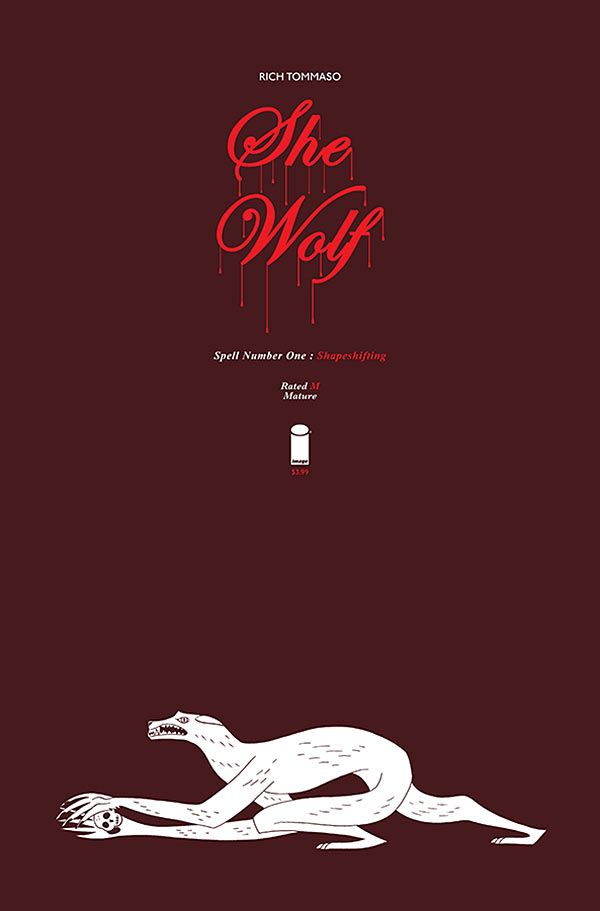Rich Tommaso's "She Wolf" #1 is an artsy take on the trope of the teenage werewolf. While the art is striking, his storytelling approach is sure to be quite polarizing. At the start of the issue, Tommaso dives right into Gabby Catella's chaotic, crisis-ridden world without any overt exposition; it's an exciting way to enter the story, but the resulting disorientation doesn't ease afterwards, as the storytelling is fragmented and disjointed like a dream throughout.
The linework is sharp and eye-catching, and Tommaso's use of partial watercolor-like washes in the background makes the pages look like they are soaked in light. The beach scene has a lovely fuzziness around the edges of bodies, and the borderless panel where two women apply sunscreen is so cheerful and visually clever that it successfully diffuses tension between lycanthropic episodes. Tommaso's color pairings are stark and thoughtful, but the palette also changes to reinforce the narrative discontinuity. In the end, whether the reader finds the results trippy or unnecessarily confusing will be a matter of taste.
As to whether Gabby is going out of her mind or her lycanthropic transformations are really happening, Tommaso leaves the answer up in the air. The same goes for Gabby's conversation with Principal Cullen (points to Tommaso for the Twilight reference); it's unclear if what Gabby sees and hears is "real" or if she's hallucinating. Tommaso then segues without explanation into a sequence in which Gabby is dressed like Little Red Riding Hood and encounters a wolf dismembering a woman in bed, which trots out the inherent sex and violence of the werewolf trope in an unsettling, nightmarish tableau, but also feels like it unfairly comes out of nowhere.
Likewise, many of the scene transitions are experimental and reality-bending. The "Bloody Mary" transition pulls in another horror trope and is amusing, but the half panel set in outer space feels like too much.
It's hard for Gabby to know what's going on, and so it's also hard for the reader. The issue is very meta, which creates plenty of tension and suspense, but there's a cost. The scenes jump about so abruptly that it feels like Tommaso is more interested in experimenting with the gutters and checking off all the thematic flourishes than giving readers sufficient reasons to care about the story.
Thematically, "She Wolf" #1 is typical of the werewolf genre: it's got visual motifs and tropes that include blood, bodies and teeth, blended with classic adolescent fixations like secrecy, shame, sexual awakening, self-discovery, alienation and guilt. It's potent stuff, and -- while the mixture is pretty much par for the course -- Tommaso's art gives it a fresh look. His ambitions are definitely more on the "art comics" side of things, and so he's fine with discarding much of the flow and build of traditional linear storytelling.
"She Wolf" #1 is strong on atmosphere and style, but it will likely fall too hard of the cerebral side for a lot of readers. Tommaso doesn't establish the main character as more than the sum of the terrors that she faces. To the degree to which they can be separated, the art is stronger than the writing in "She Wolf" #1.

